Mature companies confident in targets.
Commission with Accelerators & Decelerators
This 3-tiered commission structure for sales is widely used across SaaS specifically when selling products that are unaffected by seasonal shifts in buyer behavior. If you’re in ecommerce, we don’t recommend this compensation plan.
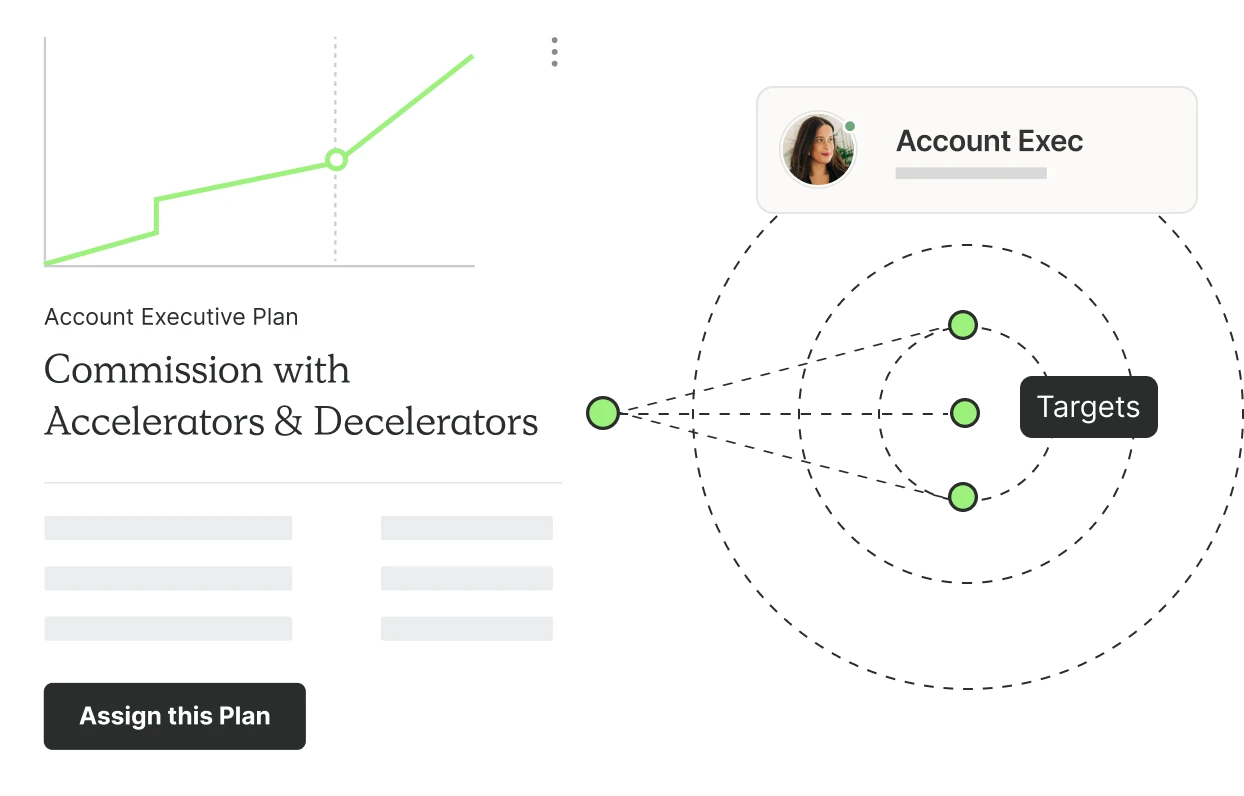
When to use this plan?
Why use a Commission with Acclerators & Decelerators plan?
Use this plan if you’re looking to separate the top performers from the under performers.
Customize the Commission with Accelerators & Decelerators Plan
Like this plan? Sign up for QuotaPath for free to add your business inputs and adjust the variables.
Forecast earnings & plan performance
See potential earnings based on your inputs and goal attainment progress.
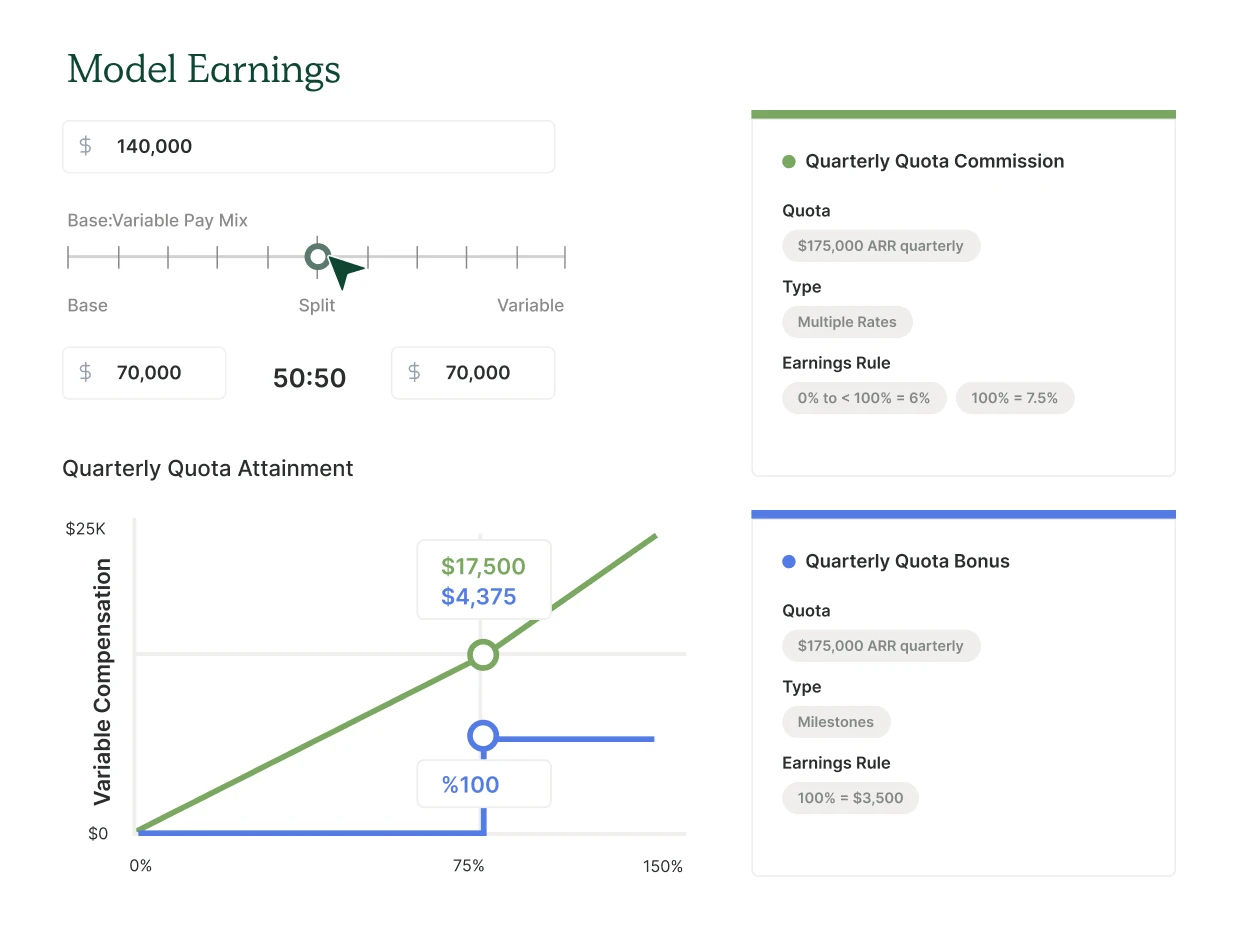
Check the health of your Quota:OTE ratio
Use the calculator to quickly measure how realistic, attainable, and healthy your OTE to quota ratio is.
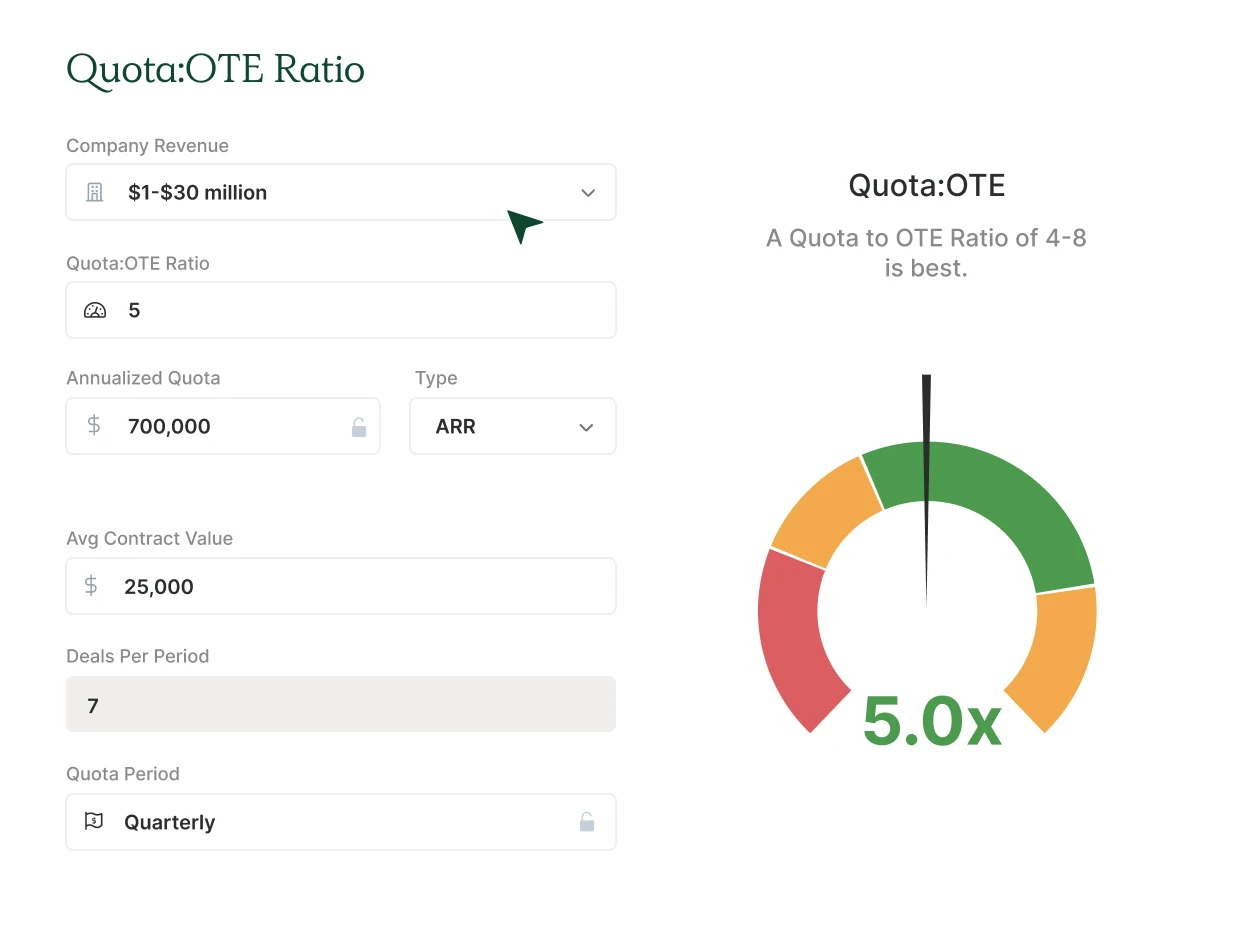
Streamline plan management
Assign the plan to your team and automate sales commission calculations. Be confident your team is being paid fairly and accurately.
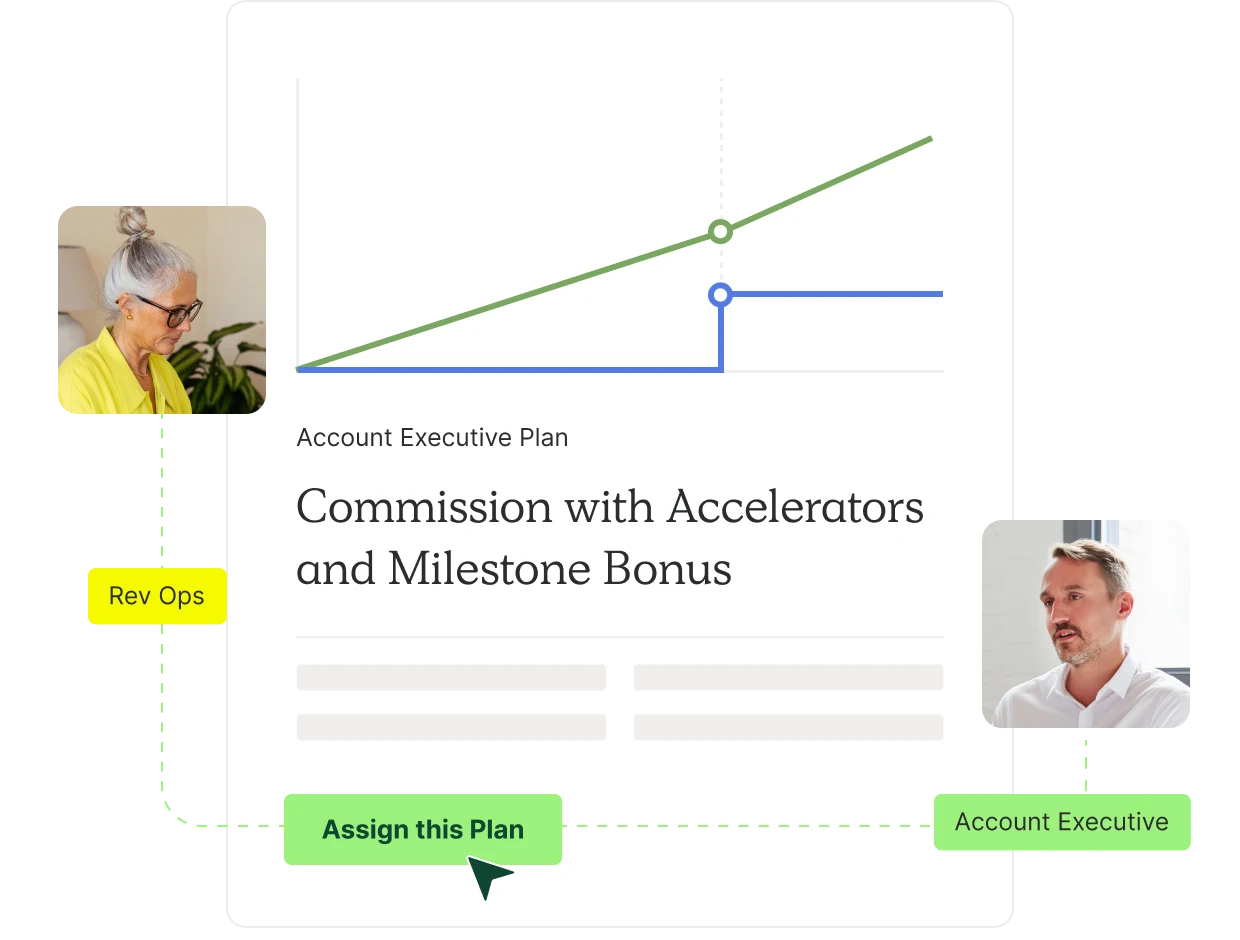
How to adjust this compensation plan template
To customize this plan, you will input these 7 variables.
On-Target Earnings (OTE)
OTE combines base salary with variable pay and represents the total amount of money your reps can expect to earn if they hit 100% of quota.
Pay Mix
Refers to the percentage of a salesperson’s total compensation, made up of base salary, commission, and other incentives. The most common pay mix in SaaS is 50/50.
Company Revenue
Revenue is the total amount of income that a company generates from its primary operations. In SaaS, annual recurring revenue is one of the most important metrics.
Quota:OTE Ratio
This ratio quantifies how much larger a quota is to a sales rep’s OTE. The most common multiplier in SaaS is a quota 5x that of the OTE, but this will vary based on size and stage of the company.
Annualized Quota
An annualized quota is a sales goal that is set for a year
Average Contract Value
Often abbreviated to ACV, this number represents the average deal size that your company sells.
Quota Period
Your quota period sets the frequency at which your team’s quota resets. In SaaS, the most common quota period is quarterly. However, this number will vary based on your sales cycle.
What should my accelerator multiplier be?
This plan features a 1.5x multiplier rate, meaning that the commission rate above quota is 1.5 times the base commission rate. The multiplier depends on how much you want to incentivize your reps to overachieve. An overly generous multiplier (ex. 3x) can create lumpiness in attainment, meaning one quarter a rep hits 200%, then the following they hit 50%. If you’re hoping for more consistency across quota periods, a lower multiplier (ex. 1.25x) might be right for you.
Should my accelerator be retroactive to the previous tier?
This plan features accelerators that do not apply to the previous tiers. There are two different types of accelerators: those that apply to previous tiers and those that do not apply to previous tiers. If an accelerator applies to previous tiers that means that all revenue closed within the quota period will earn that higher commission rate once that rate is achieved. On the other hand, if an accelerator does not apply to previous tiers that means only the revenue beyond the accelerator threshold earns the higher commission rate.
Why should I include a decelerator?
By including a decelerator, you open the door to more aggressive accelerators. If you have evenly distributed performance on your sales team, you’re likely to have some people who don’t hit the minimum bar for the decelerator. Therefore those commissions can “pay for” your more aggressive accelerators.
Should I always pair decelerators with accelerators?
It’s our belief in sales compensation that if your comp plan has a decelerator, you should have an accelerator in your comp plan, as well. This is because, as mentioned, the decelerators “pay for” accelerators. If you don’t have the accelerators, then it’s there for nothing. Additionally, reps can see a plan with only decelerators as unfair – something you want to avoid!
How many accelerator tiers should I have?
This plan features 3 tiers: the rate until 50% of quota is achieved, the base rate for 50% to 100% of quota, and the accelerated rate for all deals over 100% quota. Most plans that have accelerators feature 2 to 4 tiers. Any more than 4 tiers can become difficult for reps to remember which starts to lose the effect they were designed to have.
What is an accelerator in sales?
An accelerator rewards reps with a higher commission rate once they’ve passed a percentage toward quota attainment, deal size, or total amount of sales in a month or quarter. You may also hear accelerators referred to as multiple rate commissions.
What is a sales decelerator?
Unlike accelerators, which pay a higher commission rate to performing reps, sales decelerators pay a lower percentage of the base commission rate for under-performing reps. In this plan, the decelerator rate is in play until the rep achieves 50% of quota.
Are accelerators necessary?
Accelerators (and decelerators) reward overachievement of quota and motivate sales reps. They are the most common comp plan mechanic (80% of comp plans use accelerators), and they’re well understood by sales reps. If you’re hoping to see a lot of reps overachieve, it’s recommended to include accelerators.
Is this plan too complex?
This commission plan is more complex than the Single Rate Commission plan, as well as the Commissions with Accelerators. But the combination of an accelerator and a decelerator motivates your reps to keep striving toward the next tier to achieve the highest payouts. Plus, using a commission tracker like QuotaPath gives full visibility for reps to check on their status and see how close they are to unlocking the next commission tier. (It also automates commissions calculations for your finance team.)
In addition to accelerators and decelerators, what are some other sales compensation best practices?
Build out your business objectives first, then use your commission plan to direct the selling behaviors that will help your company reach those objectives. Other tips include setting fair and realistic quotes (you can use our free Quota:OTE Ratio Calculator to help), communicate plans in a timely manner, and aim for simplicity.
Explore similar commission plans

Commission with Accelerators
The most popular account executive commission structure in SaaS, this plan rewards over performance. Works best when you’re confident about your quotas and targets.

Multiple Rate Bonus (Revenue)
Good for high seasonality businesses.
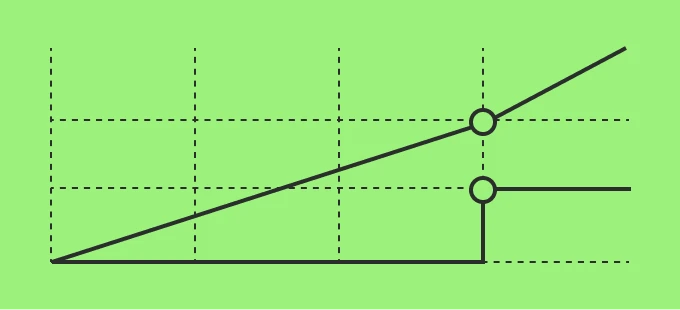
Commission with Accelerators & Milestone Bonus
If you’re looking to incentivize consistency and have higher velocities of sales, then this is the plan for you.
What industry leaders say
Manage compensation & track commissions with QuotaPath
Deliver visibility, automation, and seamlessness across the entire compensation process.